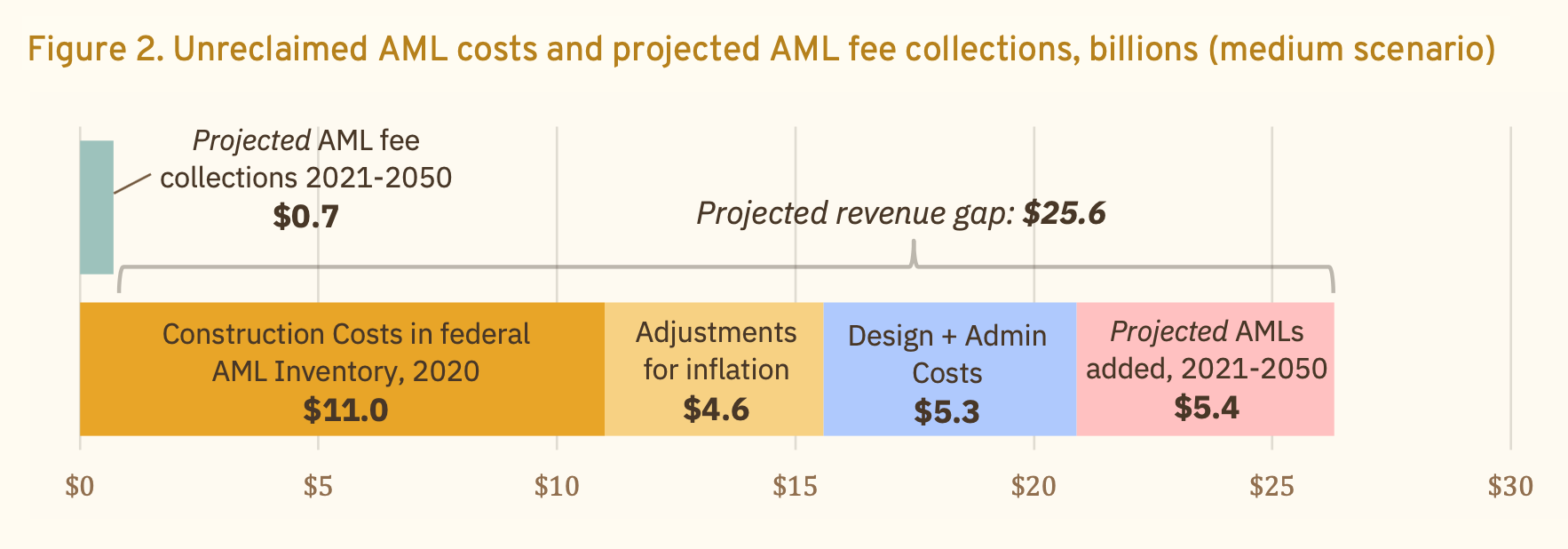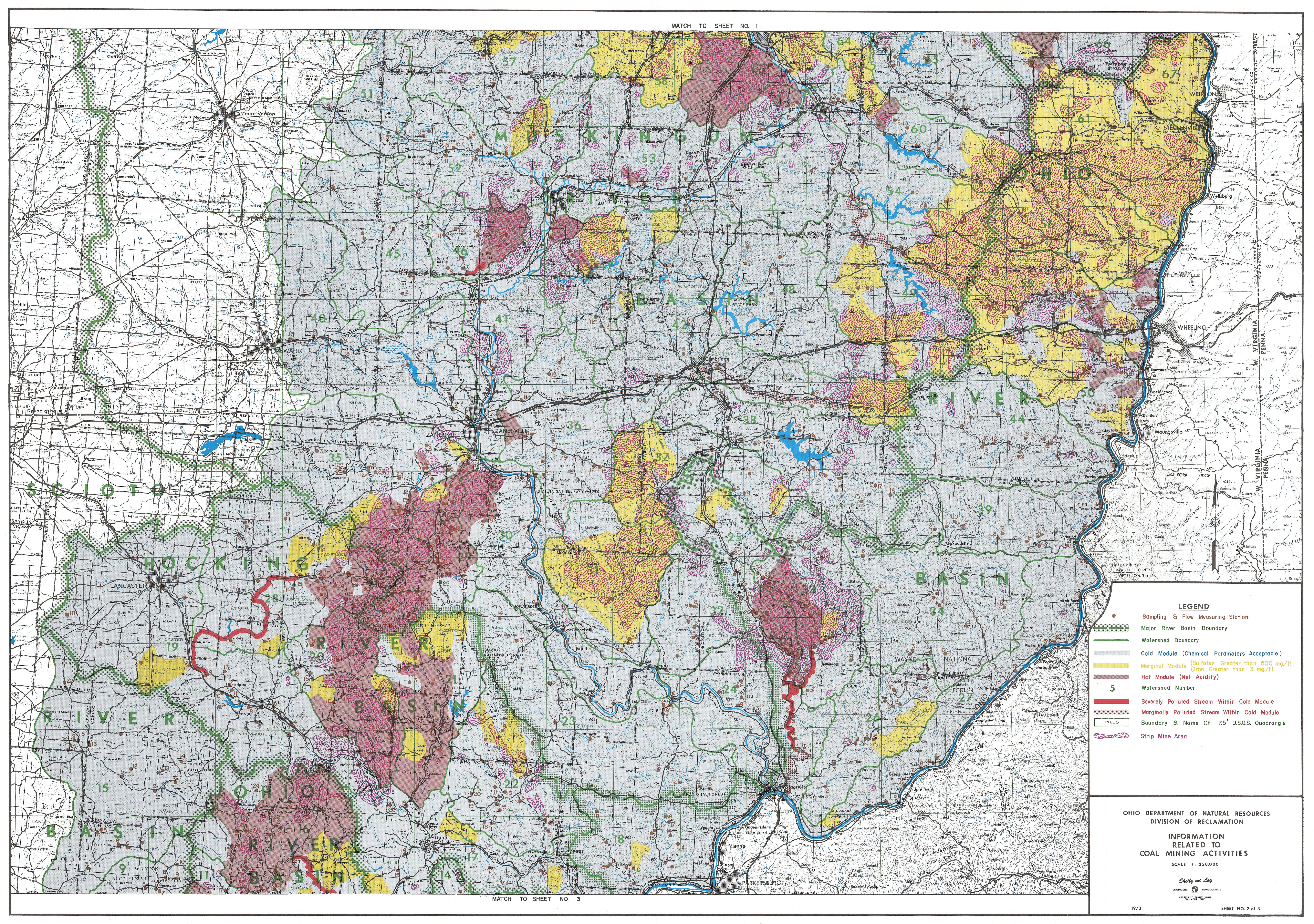Download report Download summary
For more than 200 years, the coal industry extracted billions of tons of coal in the US, damaging thousands of acres of land and water and leaving much of it unreclaimed. In this report, I demonstrate why it is critical to address the damaged sites that remain: they threaten the injury and death of residents, deter development, harm local ecosystems, and contribute to climate change. I also estimate the cost of cleaning up the remaining damage and project future reclamation program revenues. I estimate the number of jobs required to repair this damage and investigate the pay of common reclamation occupations. I close the report with a series of policy recommendations.

In 1977 Congress created the Abandoned Mine Land (AML) program to repair the damage of the coal industry prior to the genesis of the AML program. Since 1977, 978,000 acres and $7.9 billion worth of this damage has been cleaned up (see figure 1). The AML program has remained severely underfunded relative to the massive backlog of unreclaimed damage: in more than four decades, the program has cleaned up only 27% of total damage as of 2020. Congress chose at multiple junctures to keep AML fee levels low, rather than prioritize the cleanup of extensive damage to the land, air, and water of rural, persistently poor communities. Now, the coal industry is rapidly declining and with it the ability to finance the AML program through fees on coal production.
I estimate that there are $20.9 billion in unreclaimed AMLs remaining, as of 2020 (medium scenario estimate). This estimate is much larger than the $11.0 billion in costs listed in the federal AML inventory because I A) use a method based on more recent average cost estimates and adjust for inflation, and B) include design and administration costs (not just construction costs, as in the federal inventory). As more AMLs are discovered or deteriorate amidst impacts from climate change, I project that $5.4 billion in unreclaimed AML costs will be added to the inventory over the next 30 years, bringing the total unreclaimed cost to $26.3 billion by 2050 (medium scenario). See figure 2 for these cost estimates.
The program already faces a funding shortfall relative to expected reclamation costs. If the current AML fee levels are reauthorized through 2050, I project an estimated $0.7 billion in 2021-2050 collections, meaning the AML program’s revenue gap will balloon to an estimated $25.6 billion by 2050 (medium scenario).

Key Findings
- Only 27% of total AML damage has been repaired (by 2020 cost), and more than 850,000 standardized acres of damage remain.
- The estimated cost to reclaim all unrepaired AMLs is $18.3 to $24.4 billion as of 2020 (low and high scenarios)—significantly higher than the $11.0 billion in unreclaimed construction costs in the federal AML inventory. Unreclaimed costs will likely grow to $21.0 to $33.6 billion by 2050.
- 84% of remaining damage is concentrated in the 7 Appalachian states of PA, WV, OH, KY, AL, VA, and TN. PA alone contains 41% of remaining damage and WV holds 24% (by 2020 cost). 5.5 million people in Appalachia live within 1 mile of an AML site, including 1 in 3 West Virginians.
- Surface-mined AMLs can produce greater runoff and carry sediment that clogs waterways, increasing flooding. AMLs continue to clog 5,500 miles of streams—enough to stretch across the continental US. Flooding will likely exacerbate as peak rainfall increases with climate change in areas like Appalachia.
- AMLs discharge at least 320,000 gallons of water pollution per minute—enough to fill an Olympic swimming pool every 2 minutes.
- AML mine fires emit CO2, and abandoned underground mines leak CH4 –emissions that are currently unregulated and could be considerable sources of greenhouse gas (GGH) emissions. Abandoned coal mines are the 11th largest source of CH4 emissions in the US, and there remain at least 7,000 acres of AML mine fires that will cost more than $1 billion to remediate.
- If 25% of unreclaimed AML acreage were reforested, forests could potentially sequester 232,000 metric tons of CO2 annually—about as much as is emitted from powering 40,000 homes for a year.
- If we clean up half of remaining AML damage in 10 years ($1.3 billion per year), it would support 6,909 direct jobs for 2021-30: 3,178 construction jobs with $30 assumed hourly gross pay, 3,317 design jobs with state/tribal agencies, and 484 federal administration jobs (medium scenario). An estimated 10,384 induced and indirect jobs—or, 17, 293 total jobs—would be supported. Cleaning up all AMLs ($26.3 billion) would support an estimated 138,024 direct job-years and 344,403 total job-years.
- Common AML construction occupations include Construction Laborers and Operating Engineers, whose median hourly pay in AML states is around $17.60 and $22.87, respectively. Many of these workers are likely paid above a poverty wage but below a living wage. Some of these jobs are unionized, but the extent of union density is unclear and likely varies widely by state.

